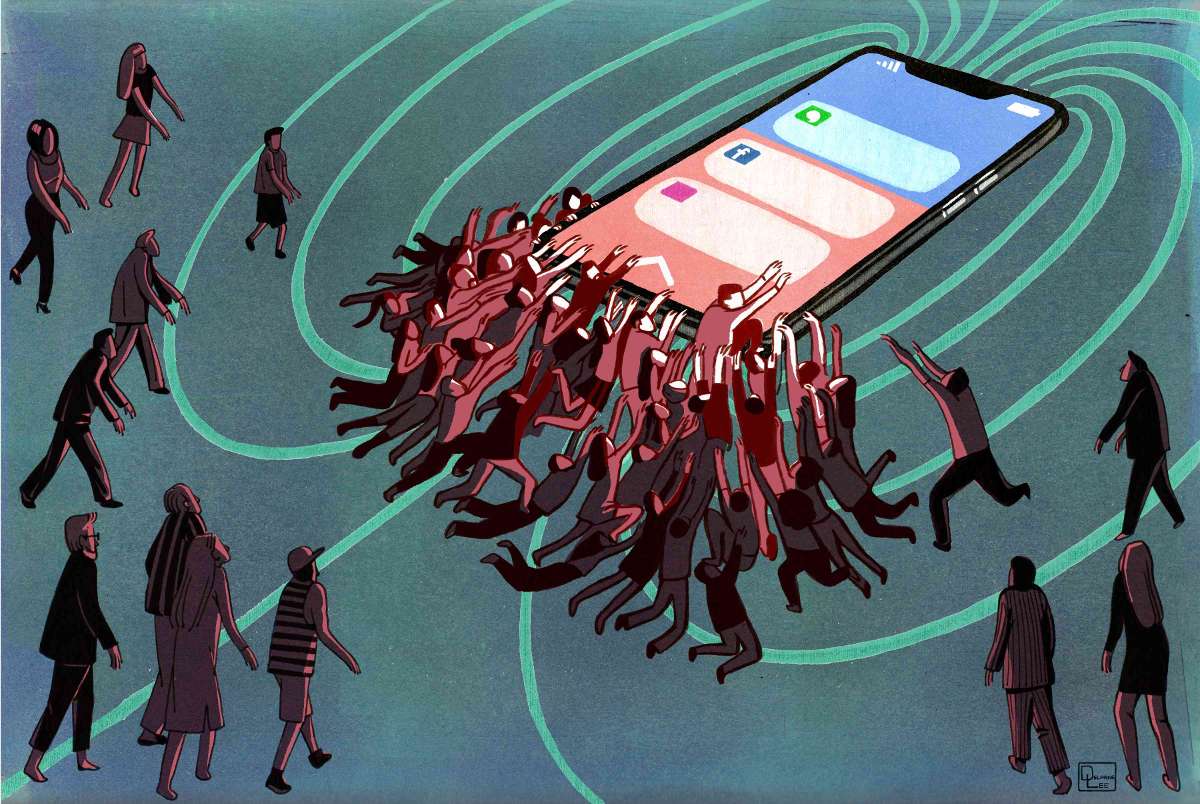The Digital Leash: Unraveling the Tangled Threads of smartphone Addiction
The sleek rectangle of glass and metal, nestled comfortably in our palms, has become an indispensable extension of ourselves. More than a communication tool, the smartphone is a portal, a library, a theatre, and a social hub. Yet, this ubiquitous device, with its promise of connection and convenience, has cast a long shadow, trapping millions in the insidious grip of smartphone addiction. The lines between healthy usage and compulsive behaviour have blurred, leaving us to grapple with the profound consequences of our digital dependence.
Smartphones are meticulously designed to be addictive. Their allure lies in a potent cocktail of psychological triggers and technological features.
The Dopamine Loop: A Symphony of Notifications

The constant stream of notifications, likes, and messages triggers the release of dopamine, a neurotransmitter associated with pleasure and reward. Each ping and buzz reinforces the behaviour, creating a cyclical pattern of seeking and gratification. This constant stimulation rewires the brain, making it crave more frequent and intense doses of digital engagement.
The Fear of Missing Out (FOMO): A Social Anomaly
Social media platforms exploit our innate desire for social connection. The fear of missing out, or FOMO, drives us to constantly check our phones, ensuring we remain connected to the ever-evolving narrative of our online communities. This anxiety-driven behaviour perpetuates a cycle of compulsive checking and social comparison.
The Infinite Scroll: A Bottomless Pit of Content
The endless scroll of social media feeds and news articles provides a constant stream of novel and engaging content. This design feature, intentionally implemented to maximise user engagement, keeps us hooked, preventing us from breaking away from the digital vortex.
The Convenience Trap: A Double-Edged Sword
Smartphones offer unparalleled convenience, allowing us to access information, entertainment, and communication with a simple tap. However, this convenience can lead to over-reliance, diminishing our ability to engage in real-world activities and interactions.

The pervasive nature of smartphone addiction has far-reaching consequences, affecting our physical, mental, and social well-being.
Physical Health: A Decline in Well-being
Prolonged smartphone usage can lead to a range of physical ailments, including:
Eye Strain and Dryness: The Digital Glare
Neck and Back Pain: The Tech Neck Syndrome
Sleep Disturbances: The Blue Light Blues
Carpal Tunnel Syndrome: The Texting Toll
Mental Health: A Fragile Equilibrium
Smartphone addiction is closely linked to a range of mental health issues, including:
Anxiety and Depression: The Social Media Strain
Stress and Irritability: The Constant Connectivity
Attention Deficit and Hyperactivity Disorder (ADHD): The Digital Distraction
Social Isolation and Loneliness: The Paradox of Connection
Social Relationships: A Diminished Connection
Excessive smartphone usage can erode the quality of our relationships, leading to:
Reduced Face-to-Face Interaction: The Silent Treatment
Impaired Communication Skills: The Digital Barrier
Relationship Conflicts: The Phone vs. Partner Dilemma
Decreased Empathy and Understanding: The Screen Divide
Cognitive Function: A Diminished Capacity
Smartphone addiction can negatively impact cognitive function, leading to:
Decreased Attention Span: The Scattered Mind
Impaired Memory: The Digital Amnesia
Reduced Creativity and Problem-Solving Skills: The Algorithmic Thinking
Diminished Critical Thinking: The Echo Chamber Effect
Overcoming smartphone addiction requires a conscious effort and a commitment to change.
Recognising the Problem: The First Step to Recovery
The first step towards breaking the cycle is acknowledging the problem. Self-assessment tools and questionnaires can help identify patterns of excessive usage and its impact on your life.
Setting Boundaries: Establishing Digital Limits
Establishing clear boundaries for smartphone usage is crucial. This includes:
Designated Screen-Free Times and Zones: The Digital Sanctuary
Turning Off Notifications: The Silent Revolution
Limiting Social Media Usage: The Curated Consumption
Using App Timers and Blocking Tools: The Digital Control
Cultivating Mindfulness: Reconnecting with the Present
Mindfulness practices, such as meditation and deep breathing, can help cultivate awareness of our digital habits and reduce impulsive urges.
Engaging in Offline Activities: Rediscovering the Real World
Reconnecting with offline activities, such as hobbies, sports, and social gatherings, can provide a healthy alternative to digital engagement.
Seeking Support: Sharing the Burden
Seeking support from friends, family, or support groups can provide encouragement and accountability during the recovery process.
Creating a Balanced Digital Diet: Fostering Healthy Habits
Developing a balanced digital diet involves:
Prioritising Quality Content: The Mindful Consumption
Using Technology for Productivity and Learning: The Purposeful Engagement
Creating a Digital Detox Routine: The Scheduled Disconnection
Practicing Digital Etiquette: The Respectful Interaction
As smartphones become increasingly integrated into our lives, it is crucial to develop strategies for promoting digital wellness. This involves:
Education and Awareness: Empowering Informed Choices
Educating individuals about the potential risks of smartphone addiction and promoting healthy digital habits is essential.
Technological Solutions: Designing for Well-being
Developing technological solutions that promote responsible smartphone usage, such as built-in usage trackers and mindfulness apps, can help mitigate the negative impacts of digital dependence.
Societal Shifts: Fostering a Culture of Digital Balance
Creating a societal culture that values digital balance and prioritises real-world interactions is crucial for fostering healthy digital habits.
Research and Innovation: Unveiling the Long-Term Effects
Continued research and innovation are needed to understand the long-term effects of smartphone addiction and develop effective interventions.
The smartphone, a tool of immense potential, has become a double-edged sword, offering connection and convenience while simultaneously trapping us in a cycle of digital dependence. By recognising the signs of addiction, setting boundaries, and cultivating mindfulness, we can reclaim control of our digital lives and forge a healthier relationship with technology. The journey towards digital wellness is not about abandoning technology altogether, but about finding a balance that allows us to harness its benefits without sacrificing our physical, mental, and social well-being. The digital leash can be broken, and the freedom to live a more mindful and connected life awaits.



